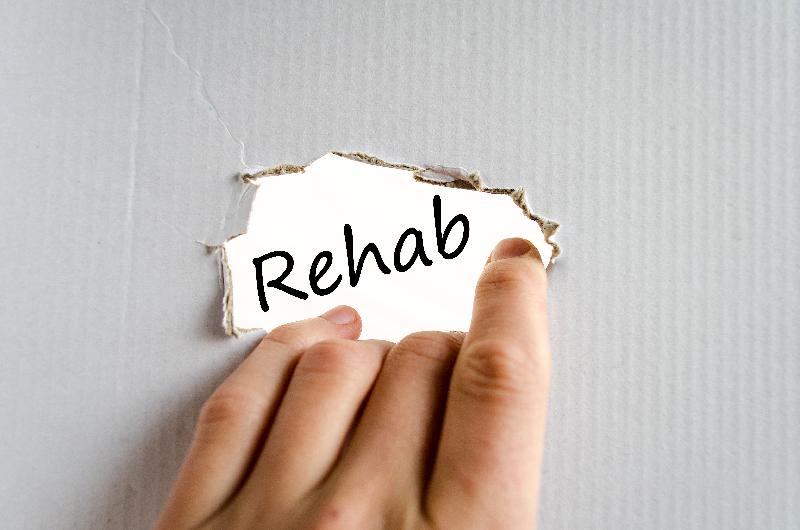*Once you’ve admitted you have an addiction, the next step you need to do is go to rehab. Should you go online at taking a look at the statistics, the numbers may scare you off. However, it would help if you looked into all your possibilities of healing your addiction.
How much time will you spend in regular rehab centers?
Not all conventional rehab centers are the same, so here are the most important to mention:
- Residential treatment
The program is focused on changing the lifestyle through a program lasting for some time (71 days or so). The program is relying on the use of peer counselors, and not much on medications or medical staff.
- Inpatient treatment
It ensures great medication and counseling, in a short amount of time (typically 31 days).
- Outpatient drug-free
These programs are focusing more on counseling and less on medication. People with addiction still live in their homes, and programs last for 164 days, give or take.
- Medical detox
As the name suggests, it focuses on the use of medications for easing out the transition from using to not using. It also includes psychological treatments. Most of the time, it lasts almost 230 days.
What are the costs?
With the variety of approaches and methods, it makes perfect sense that there are differences in the costs too.
- Residential treatment
It is around $3,000, with more than 50% of the patient completing the procedure and only 21% of them being able to sober after five years.
- Inpatient treatments
You will pay $3,200 for inpatient treatment (give or take). More than 70% of the patients will also complete the procedure, and 20% of them will no longer abuse for at least five years.
- Detox
Typically, you pay around $2,000 for rehab. However, only 33% of the patients can go through the program entirely, and less than 20% of them will stay sober for five years.
- Outpatient drug-free
It’s the most affordable option, and people pay around $1,000 for a program of this kind. More than 40% of the patients will actually complete the application, and less than 20% (18%) will remain sober after five years.
Should you look into holistic rehab?
As you’re checking the numbers, you may quickly notice that the rate of success isn’t the most impressive for either of the conventional rehab programs.
Therefore, it makes perfect sense why people look for alternative programs that have promising results. Enrolling in a holistic rehab is going to give you the possibility to heal on a spiritual, emotional, and physical level. For a holistic vantage point, the addiction isn’t a disease, but as a sign of several unbalances in your system, explains Johnny Tabaie (called Johnny “The Healer” by his patients) of The Holistic Sanctuary.
Many of the methods and therapies used within a holistic rehab program are defined as an alternative to complementary medicine. Therefore, some insurance companies will recognize the benefits and ensure reimbursement for them.
Even if the holistic rehab programs look appealing to many, they still throw some off due to the steep price. For instance, inpatient treatment can range from $200 to $900 per day. Should you go with an outpatient program, you may pay somewhere from $100 to $500 per session. In Tabaie’s exclusive center, prices can exceed $3000 per day, but you’ll enjoy nothing short of cutting edge treatments.
The location, the quality of amenities, the variety of methods, and the peculiarities of the programs can change the price. Still, holistic rehab programs are being counted as a dependable and efficient method to heal your addiction.
Is holistic rehab a dependable option?
The National Center for Complementary and Integrative Health states that 4 in 10 adults in the United States are using complementary and alternative medicine. The trend is expanding as more and more rehab centers are created, and more and more people choose them over the conventional rehab programs.
With holistic methods focusing on identifying the primary cause of addiction, the alternative rehab programs are aiming to improve well-being and not address just one’s behaviors or symptoms.
Having said that, keep in mind that holistic approaches shouldn’t focus on addictive behaviors, but address a comprehensive set of aspects leading to the addiction of the patient.
Is it expensive to abuse drugs?
Many factors are affecting the efficiency of a rehab program, and you cannot always connect the cost with the success rate.
According to a report that the Office of National Drug Control Policy has published, the monthly spending for cocaine is around $800, whereas heroin is almost $1,500. One using marijuana will pay a bit over $200 every month, whereas methadone is over $600 per month.
On the other hand, the spending for drug-related health care is only $30 (give or take), whereas the average monthly expenditure for lost wages related to drugs is only 63 cents.
Should you drive under the influence, you’re going to have to pay more than $10,000 for court fines, attorney fees, insurance increases, lost wages, DMV fees, and so on. And that’s only when it happens for the first time.
Jail time is the scariest scenario, and drug-related prison sentences start from 87.2 months. Are all of these numbers scary enough?
How should you choose your rehab program?
It seems that the state and federal governments are spending more than $15 billion (don’t forget about the $5billion that come from the insurers) on services related to substance abuse. However, measuring the efficiency of all programs is still a tricky matter.
Truth be told, there aren’t many programs to provide precise data about their efficiency. As a matter of fact, many facilities don’t let outside researchers to have any studies or to analyze patient completion, relapse state, or follow-up states. Many of the facilities are private, so it’s challenging to use a standard guideline for evaluating efficiency. Moreover, every rehab program has a particular philosophy, which only makes the comparison more difficult.
The Commission on Accreditation of Rehabilitation Facilities (CARF) is a non-profit organization that will provide accreditation to rehab centers. A facility has to meet several requirements for achieving a CARF accreditation.
However, it all depends on the options you have and the size of your wallet. Should you have tried and failed to overcome addiction with a conventional rehab program, it wouldn’t be a bad idea to look into the holistic alternatives. Just do your homework before enrolling!
We Publish News 24/7. Don’t Miss A Story. Click HERE to SUBSCRIBE to Our Newsletter Now!






